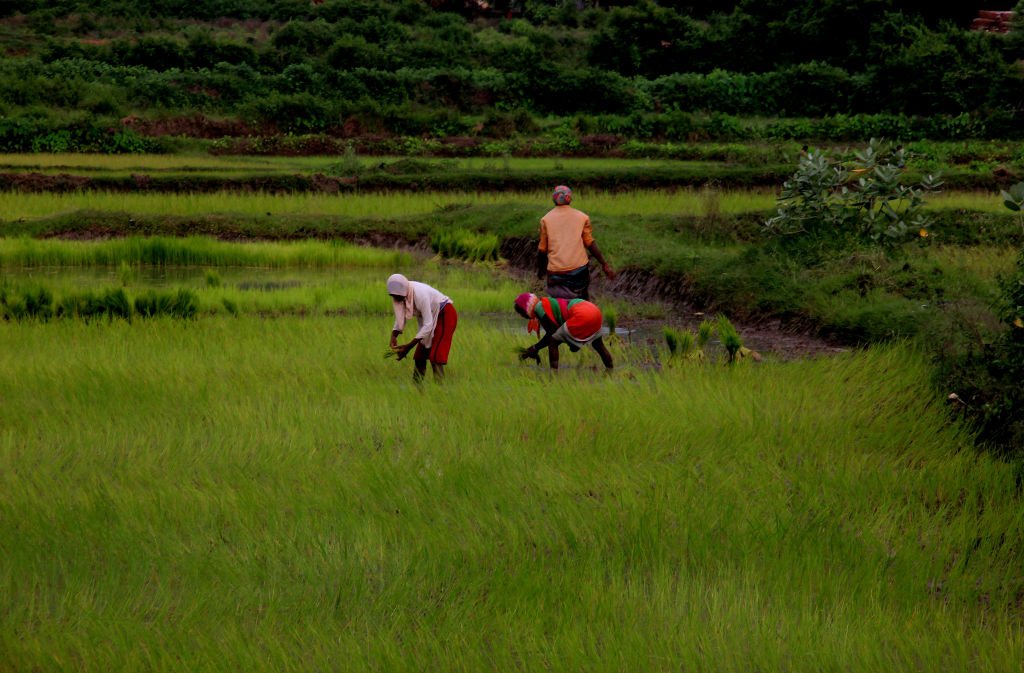Pradhan Mantri Fasal Bima Yojana Turns Nine: A Milestone in Agricultural Insurance
The Pradhan Mantri Fasal Bima Yojana (PMFBY), launched by the Government of India, has completed nine years of implementation in 2025. This flagship insurance scheme aims to provide financial support to farmers in times of crop failure due to various reasons such as natural disasters, pests, or diseases. The scheme has been a vital tool in supporting farmers and strengthening India’s agricultural sector by offering them an affordable way to safeguard their livelihoods.
Key Features of PMFBY
The PMFBY was introduced on 18th February 2016 to help farmers mitigate the risk of crop loss. Under the scheme, farmers are provided with insurance coverage for their crops against unpredictable weather patterns, pests, and diseases. The scheme covers all food crops, oilseeds, and commercial crops. A notable feature is that it offers low premium rates, making it affordable for farmers across the country. Additionally, the government bears a significant portion of the premium cost, ensuring wider participation.
The scheme follows an Area Approach, which means that the premium amount varies based on the geographic location and crop type. The farmers are provided with a uniform sum insured across all regions, thereby enabling more consistent financial protection for them.
Impact of PMFBY on Farmers
Over the past nine years, the PMFBY has made a significant impact on the agricultural sector. More than 12 crore farmers have been insured under the scheme. The government has disbursed substantial payouts to support farmers during natural calamities. For instance, in the 2021-2022 period, over ₹1,500 crore was paid to farmers as compensation for crop losses.
The scheme has not only offered financial protection but has also encouraged farmers to adopt modern agricultural practices by removing the financial uncertainty that often hinders productivity. The increased participation from farmers indicates a positive shift towards adopting crop insurance as a risk management tool.

Why this News is Important
Significance for Farmers and the Agricultural Sector
The completion of nine years of the Pradhan Mantri Fasal Bima Yojana marks a significant achievement in the Government of India’s efforts to boost agricultural sustainability and provide economic security to farmers. Agriculture remains the backbone of India’s economy, and a substantial portion of the population depends on farming for their livelihoods. However, the risks involved, such as erratic weather conditions and natural calamities, often leave farmers vulnerable to financial instability.
The PMFBY has played a pivotal role in addressing these challenges by ensuring that farmers have a safety net to fall back on in case of crop failure. This insurance scheme has not only protected farmers but also bolstered the overall agriculture sector, ensuring food security for the nation.
Aligning with Government’s Vision of Atmanirbhar Bharat
PMFBY is aligned with the government’s vision of “Atmanirbhar Bharat” (Self-Reliant India), providing a robust mechanism for rural farmers to continue growing crops despite unforeseen events. It helps farmers gain confidence to invest in high-yielding crops and adopt better agricultural practices. The scheme has contributed significantly to the financial inclusion of the rural population, encouraging them to take loans for agricultural improvements.
Promoting Financial Inclusion and Risk Mitigation
The scheme is also crucial in promoting financial inclusion among farmers who previously had limited access to formal financial services. It helps mitigate risks and shields the farming community from the adverse effects of natural disasters. Moreover, the success of PMFBY has attracted global attention as a model for providing crop insurance to small-scale farmers.
Historical Context
Background of Crop Insurance in India
The Pradhan Mantri Fasal Bima Yojana was introduced as a replacement for the existing National Agricultural Insurance Scheme (NAIS) and the Weather-based Crop Insurance Scheme (WBCIS), both of which had several limitations in terms of reach and effectiveness. Crop insurance has always been a vital aspect of India’s agricultural policy, but it gained significant attention in the 21st century as India faced more frequent natural calamities.
Before the implementation of PMFBY, farmers faced significant challenges due to the lack of adequate financial support during crop loss events. The PMFBY was introduced as a comprehensive and user-friendly scheme to address these issues, providing more coverage, better technology integration, and higher payouts for farmers compared to previous schemes.
Evolution of PMFBY
The evolution of PMFBY marks a progressive move towards more inclusive agricultural policy in India. The scheme has evolved over the years, with a focus on reducing premiums and enhancing accessibility to farmers. The introduction of technology-driven solutions like mobile applications for enrollment, claim settlement, and weather-based data collection has made the process more transparent and efficient.
Key Takeaways from Pradhan Mantri Fasal Bima Yojana Turns Nine
| Serial Number | Key Takeaway |
|---|---|
| 1 | The PMFBY scheme has completed nine years of implementation in 2025. |
| 2 | More than 12 crore farmers have been covered under PMFBY. |
| 3 | The scheme offers affordable premium rates and substantial government support. |
| 4 | PMFBY has paid out significant compensation to farmers in case of crop failure. |
| 5 | The scheme promotes financial inclusion and risk mitigation for farmers. |
Important FAQs for Students from this News
What is the Pradhan Mantri Fasal Bima Yojana?
The Pradhan Mantri Fasal Bima Yojana is a crop insurance scheme introduced by the Government of India to support farmers in case of crop loss due to natural calamities, pests, or diseases.
How many farmers have benefited from PMFBY?
Over 12 crore farmers have been insured under the PMFBY scheme since its launch.
What are the key benefits of PMFBY?
Affordable premium rates, financial support for crop failure, and widespread coverage across various crops are some of the key benefits.
When was PMFBY launched?
The scheme was launched on 18th February 2016.
What kind of crops are covered under PMFBY?
The scheme covers food crops, oilseeds, and commercial crops.
Some Important Current Affairs Links


















 Exciting News!
Exciting News!  Join Our Telegram Channel Now!
Join Our Telegram Channel Now!
 Join our Telegram channel for a thrilling adventure into the world of daily current affairs.
Join our Telegram channel for a thrilling adventure into the world of daily current affairs. 
 Don’t miss out on the latest updates and insights! Click to join now and be part of the knowledge revolution!
Don’t miss out on the latest updates and insights! Click to join now and be part of the knowledge revolution! 
